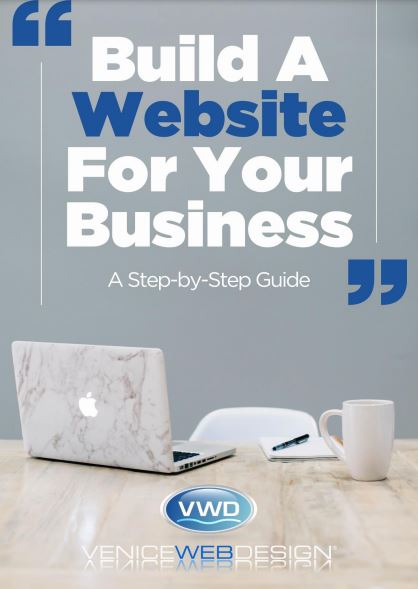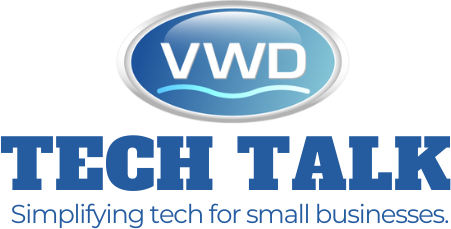Your website is the heart of your sales strategy. It connects with your audience across every marketing channel.
It works 24/7, bringing in leads and closing sales without you even being there. Unlike social media profiles or rented advertising space, your website is a platform you own and control.
Stop treating your website like a glorified brochure and start using it as the powerful sales tool that it is.
First Impressions Matter
You take care to select the best business casual for your next meeting and choose a business card that conveys your brand. You put your best foot forward when it comes to a first impression and understand the importance of the halo effect (people see one good trait and assume more positive traits).
Your website has the power to create a similar, powerful first impression. A well-designed, responsive site works for you 24/7 and helps to connect with prospects and customers through meaningful content and a superior user experience.
Websites are tools that impact all aspects of the marketing-to-sales funnel. They introduce brands to new buyers at the top of the funnel, build trust factors, support buyer due diligence and remove doubt, and provide a strong final call to action. They are also a way to cultivate relationships over time and bring leads directly to salespeople.
Your Website Works 24/7
A well-designed, visually and technically modern website acts as your 24/7 salesperson. It’s always on and ready to answer questions that you might not be able to respond to quickly or after hours, or even to sell services to people who may not have thought of calling your business.
Unlike other sales tools, your website doesn’t need training or refreshers to be effective, and it can respond to customer needs in real time. It can answer questions about products or services, offer special promotions or deals, and even provide personalized experiences like recommending products or sending follow-up emails after a purchase to build loyalty and brand awareness.
It’s also always collecting data to tell you how your audience is engaging with it. By analyzing bounce rates, search terms, navigation paths, and other metrics, your website can give you exceptional feedback that you’d never get from other sales tools.
Guiding Visitors Through the Sales Funnel
The sales funnel is a process of taking in potential customers and narrowing them down to paying customers. Your website can help guide visitors through this process with clear and focused landing pages, highlighting features and benefits, offering specials, and creating an easy checkout experience.
Using conversion funnel analysis, you can identify areas of your site that need improvement. For example, high drop-off rates on a particular page can indicate that there is not enough incentive for visitors to take the next step.
The early stages of the sales funnel are critical to capturing attention and building trust. If your website is slow, confusing, or hard to navigate, you are losing leads before they can even engage with you. Ensure that your website is fast, user-friendly, and mobile responsive to set you apart from your competitors. This is a great way to establish yourself as an expert in your field and nurture prospective buyers into loyal customers.
Educating and Empowering Prospects
When potential customers are looking for your business, they want to find answers quickly. Featuring key information like your hours, location, and products/services on your website makes it easy for them to learn more before they call or email you. This saves your team valuable time and enables them to focus on tasks that increase company productivity.
Many people, especially Gen Z and millennial prospects, expect a company to have a website and will not consider you legitimate if you don’t. Displaying information about your company’s history on your site also helps to humanize your brand and build trust.
Additionally, websites make it easy to capture and nurture leads with features like contact forms, newsletter signups, and back-in-stock notifications. These tools are far more efficient than print ads or snail mail brochures, and help to deliver your marketing messages 24 hours a day. You can even use your website to drive traffic to other marketing channels.
SEO and Discoverability
Search engine optimization (SEO) plays a crucial role at the bottom of the sales funnel, helping people find the products and services that best fit their needs. However, discoverability also has a significant impact in the middle of the sales funnel, when people explore and compare options.
Ensure the content on your website is SEO-friendly by focusing on relevant keywords and writing original, valuable, and insightful information that answers real questions. Then, structure your website in a logical way that makes it easy for users to navigate and read. Use a variety of tools to find and research new keywords, and consider incorporating them into your site’s visual design.
Make it easier for customers to share your content and recommend your business to others by providing social media sharing links on your key pages. Also, consider using a link in bio tool for your website to help drive organic traffic and visibility.
Data-Driven Sales Optimization
Achieving sales optimization is the key to breaking through plateaus and accelerating revenue growth. By utilizing data-driven strategies, companies can achieve higher conversion rates and shorter sales cycles.
To achieve these goals, businesses must first be able to collect and manage their sales data effectively. This involves setting up the right processes to track important metrics, including conversions and win/loss ratios. It also requires implementing tools that automate time-consuming tasks and streamline the sales process.
Using data-driven techniques also means analyzing customer feedback, which can help improve the quality of service and encourage repeat business. Lastly, it means developing and deploying an effective marketing strategy that targets the right customers through accurate customer segmentation. These steps, coupled with a well-organized website design that prioritizes mobile functionality, can help you optimize sales in eCommerce.
Final Thoughts
Your website is far more than just a digital presence; it’s the beating heart of your sales strategy. By harnessing its full potential, you establish yourself as a credible authority and a go-to resource for your audience.
At Venice Web Design, we understand the importance of creating an engaging, user-friendly experience that reflects your brand’s identity. Our team is dedicated to optimizing your site for discoverability, ensuring that you not only attract more visitors but also convert them into loyal customers. We specialize in crafting visually stunning and technically efficient websites that captivate your audience and drive sales.


